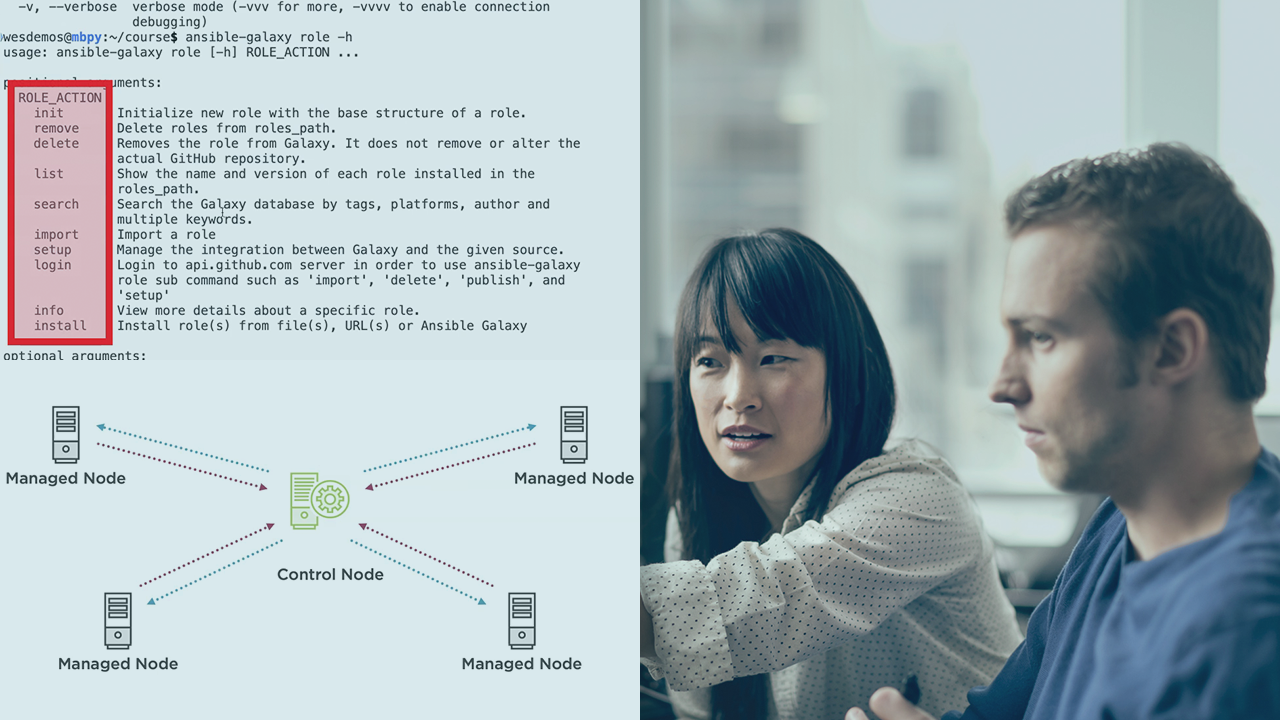- Course
Getting Started with Ansible
What if you could specify WHAT a system should look like and another tool took care of making that possible so you don't need to know HOW it works and can focus on WHAT outcome is desired. That's what Ansible can do for you!

- Course
Getting Started with Ansible
What if you could specify WHAT a system should look like and another tool took care of making that possible so you don't need to know HOW it works and can focus on WHAT outcome is desired. That's what Ansible can do for you!
Get started today
Access this course and other top-rated tech content with one of our business plans.
Try this course for free
Access this course and other top-rated tech content with one of our individual plans.
This course is included in the libraries shown below:
- Core Tech
What you'll learn
Ansible is a popular choice for IT automation because it allows you to concisely specify a desired state and then it does the heavy lifting to make that state a reality. In this course, Getting Started with Ansible, you will learn foundational knowledge to quickly and reliably configure just about anything with Ansible. First, you will learn how to install Ansible and use the ansible Ad-hoc command line tool to execute one-off modules in Ansible to configure single aspects of a system like ensuring a line exists in a file, or an application is installed. Playbooks will be composed of modules to build up larger configurations all stored in simple file(s) that pass through ansible-playbook. Then, you'll see how to use inventories to configure multiple machines including a full fledged VM learning lab that you then use Ansible to configure. Next, you'll explore how to learn what you need to know, when you need to know it. Later, you'll see how to swap out Ansible's default usage of SSH via connection plugins to connect to different environments such as Windows machines and docker containers. And how the ansible-pull command inverts Ansible's default push model. Finally, you'll discover reuse with Ansible Galaxy and corresponding ansible-galaxy command via both Roles and Collections. By the end of this course you'll be prepared to move beyond manually configuring applications, servers, networks, etc. Beyond writing confusing scripts. To spending your time on more valuable endeavors.
Getting Started with Ansible
-
Configuring an Explosion of Devices | 3m 32s
-
Using the git config Command to Manually Configure User Name and Email | 6m 48s
-
A Repeatable Script to Automatically Configure Git with user.name and user.email | 10m 12s
-
git config --add Is Not Idempotent Because It Duplicates Config | 9m 16s
-
Desired State Reconciliation and the Power of Ansible | 8m 2s
-
Installing Ansible and the Installation Guide Docs | 5m 28s
-
Updating Ansible via pip or Otherwise | 3m 5s
-
Leverage the Porting Guides | 1m 35s
-
Know How to Know What You Need to Know as You Go | 1m 32s
-
Why Installs and Even Updates Are Easy - Control Node Architecture | 4m 41s
-
The Ansible Ad-hoc Command | 7m 50s
-
Disseminating a .gitconfig with Ansible Ad-hoc and the Copy Module | 6m 14s
-
Understanding Idempotence with the Copy Module | 2m 41s
-
How Ansible's Copy Module Handles Drift Thanks to Idempotence | 2m 38s
-
The --check Flag Simply Checks if Changes Would Be Made | 3m 4s
-
The --diff Flag Shows What Will Change or Did Change | 4m 1s

